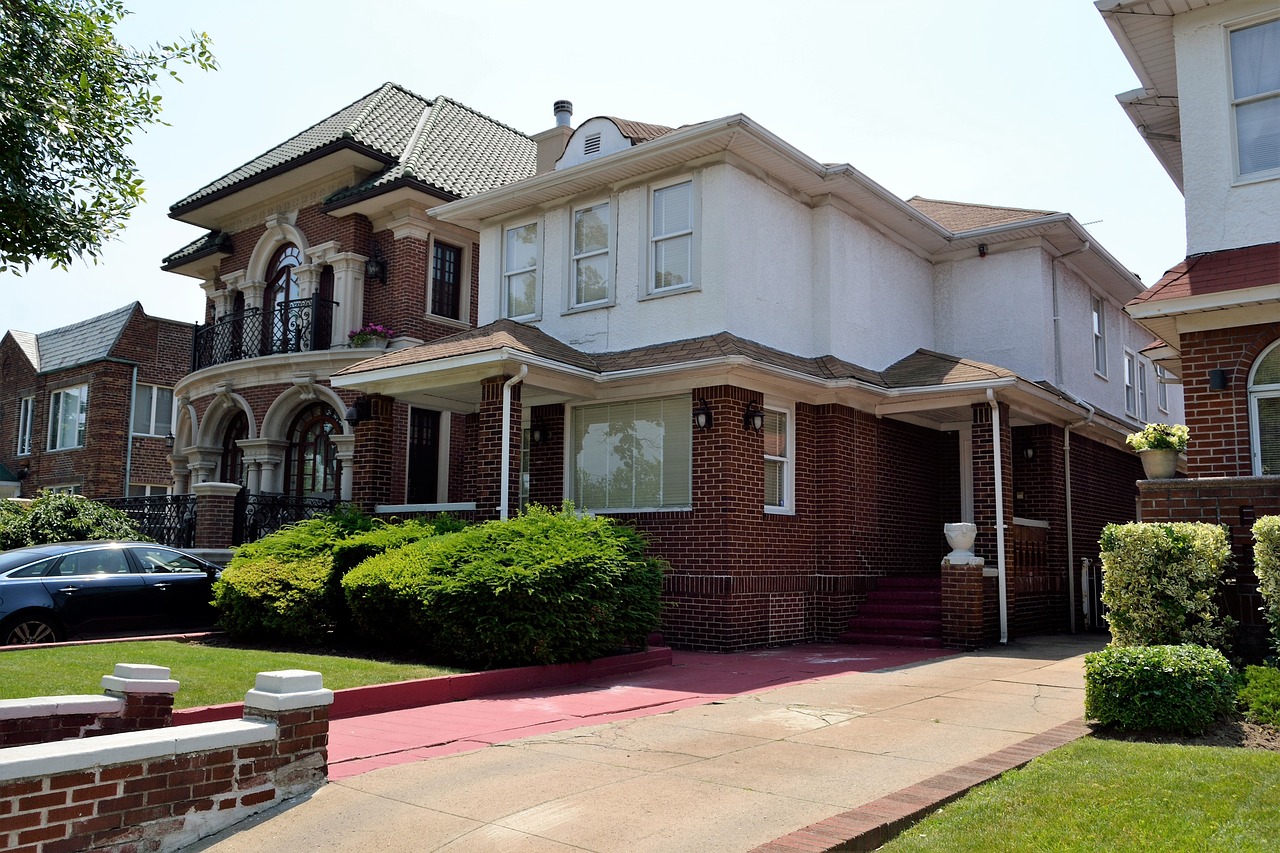Commercial Construction Loan Requirements

For a business, needing a commercial construction loan is typically a positive indication. It is prepared to build more space for a specialized kind, ready to expand its current facility, and ready to purchase land for a completely new facility. However, one of a business’s single biggest investments is in commercial construction. It is frequently an expense that is higher than the company’s and its owners’ capacity to pay.
A Commercial Construction Loan: What Is It?
This could be the time to apply for a loan for commercial construction. Identify it as an expansion loan, a land purchase loan, a renovation loan, or a new construction loan: It is a commercial construction loan if it is intended for a project involving a commercial building. This kind of loan differs significantly from other business loans in certain aspects (like a commercial mortgage to buy an existing facility as one would buy a home). Lenders typically see loans for commercial construction as highly risky. That clarifies some of the unique characteristics of these loans as well as the conditions the borrower must satisfy in order to be accepted.
Different Construction Loan Types
Which kinds of loans are available for commercial construction? Commercial construction loans are provided by both public and private lenders, such as banks, credit unions, and other lenders.
One popular source of commercial construction loans is the Small Business Administration (SBA), as they have competitive interest rates, do not require large down payments, and only require credit scores in the upper 600s.
- Up to $5 million may be borrowed under the SBA CDC/504 loan over ten or twenty years, with interest determined by U.S. Treasury rates. 10% to 30% of the total amount is needed up front, and collateral is typically needed. The loan must be personally guaranteed by the company’s major owners. An SBA-certified development company will provide funding for up to $5 million, or 40% of the project’s total costs. (This is known as the ratio of loans to costs.) Thus, the borrower must contribute at least 10%, and occasionally 20%, to the costs, and another lender must be found for the remaining 50%.
- Commercial real estate can be purchased or built upon with an SBA 7a) loan. Once more, there is a $55 million loan cap, but there is a 25-year repayment period. The interest rate on this loan is 2.75 percent over prime, with higher rates applied to loans under $50,000 or with shorter terms than seven years. Here, the down payment is between 10% and 20%, and the borrower must have credit in the upper 600s.
- Banks lend money to entrepreneurs in the conventional commercial construction sector. Interest rates, terms of repayment, and down payment requirements vary amongst banks. However, it is almost always required that borrowers make a down payment of at least 10%, repay the loan over a period of 25 years, and select between fixed and variable interest rates.
- “Hard money loans” are short-term funding options that need to be secured by real estate and can be made by private investors or businesses. These loans have higher interest rates and fees than those offered by other lenders, but there are frequently lower up-front costs and a quicker turnaround time on funding.
How Loans for Commercial Construction Operate
Commercial construction loans are not given to the borrower in full up front like the majority of other loan kinds. Rather, the loan is only accessed when specific project milestones are met. As a draw schedule, these benchmarks are specified beforehand while the loan is being evaluated. Consequently, the payment plans vary based on the lender and the project. Typical benchmarks in the draw schedule include the following examples:
Make the land clear and useful.
- Transfer the base.
- Enclose the structure.
- Invest in the necessary equipment.
The loan is taken out in the predetermined amounts for each step as it is finished. It is highly likely that the lender will request an expert inspection prior to authorizing a specific loan drawdown. This structuring of withdrawals is reflected in the interest payments on the loan, as will be explained below.
Rates of Interest
Only the portion of the loan that has been drawn is subject to interest payments by the borrower. Lenders will charge different interest rates based on a number of factors, including the borrower’s credit score, down payment amount, type and extent of collateral, perceived project risk, business profitability, and debt load of the enterprise. These are all covered later.
Rates that are offered vary from roughly 4% to 12%.
The Initial Down Payment
By lowering the lender’s risk, the required down payment from the borrower may result in a lower interest rate. The down payment is typically at least 10% of the total project cost, but it may be as much as 20% or 30% depending on the perceived risk factors. Although 100% project cost loans are not unheard of, they are by no means the norm.
Fees
Lending money for commercial construction has costs, just like any other type of financial transaction. A portion of these expenses are covered by fees paid at loan origination:
- The holder of a mortgage-backed security pays guarantee fees to the issuer, which are used to cover the issuer’s overhead and other associated costs. For instance, the guarantee fees charged by the SBA vary from 2% to 3.5% of the loan amount.
- Processing fees cover the costs incurred by the lender during the loan processing process.
- Documentation fees cover the specific expenses incurred by the lender in creating the loan documentation. Depending on the lender, they can range from $50 to $100 on average.
- Project evaluation Fees cover only the cost of the lender examining the construction plans when evaluating the loan application.
- Money management Fees apply if the lender wants a third party to keep an eye on project expenses and determine how much is best spent.
Conditions for Commercial Construction Loans
When applying for a commercial construction loan, the borrower must 1) meet project requirements and 2) provide documentation of both his business and personal creditworthiness.
Personal, Business, and Credit Background
The lender will want to review the credit history and score of each individual borrower as well as the credit history and debt status of the company. Naturally, lenders won’t approve every construction project. Thus, the borrower’s personal credit score will be checked first. Remember that lenders want to balance out the “high risk” nature of commercial construction loans with low-risk borrowers, which entails having high credit scores. Although each lender will have different requirements for determining creditworthiness, a borrower generally needs to have a credit score in the high 600s to be eligible for a loan like SBA CDC/504.
- The credit score of the company will also be carefully examined.
The relationship between the company’s monthly income and debt is known as the debt-to-income ratio. Generally, a DTI of 40% or less is acceptable, but certain lenders have more stringent requirements. The likelihood of a loan being approved is higher for businesses with lower DTIs. This is the equation: DTI is the sum of all monthly debt payments and gross monthly income.
A different measure of DTI will also be looked at by the lender in order to obtain a longer-term perspective of the company’s debt service coverage ratio (DSCR). Stated differently, what is the annual revenue generated by the business relative to its debt servicing expenses? This is the equation: DSCR is calculated as Net Operating Income / Current Annual Debt Obligations. A higher DSCR number is what you want because it shows that the company is making enough money to pay off its current debts as well as the debt that the construction loan will incur. Generally speaking, lenders prefer to see a DSCR greater than 1.25, however each lender has different requirements.
- Knowledge of the Industry and Present Profitability of the Business
In general, a lender might ask about your background in the field and request to see specific, current financial records of the company.
An Expert Builder
As the project’s general contractor, you should choose a certified builder before submitting an application for a construction loan. This typically entails having a verifiable record of completed projects and membership in the respectable association of general contractors in your area.
A substantial down payment
As previously stated, lenders that make rare exceptions will demand a down payment equal to at least 10%—and occasionally even up to 30% or more—of the total cost of construction. The lender may offer a lower interest rate if there is a larger down payment because there is less risk involved. The down payment for the loan should have been obtained by the borrower prior to applying, either from the company’s resources or from personal resources like credit cards or a home equity line of credit. However, bear in mind that those might raise the amount of personal or business debt the lender looks at.
Evaluation
Any significant acquisition that the project anticipates making, like land to be bought or a building to be bought and renovated, should have its market value evaluated by a qualified appraiser. It will be taken into account by the bank when determining the risk of the project and whether the requested loan amount is appropriate.
An in-depth explanation of the construction schedule
The requirements of the commercial construction loan dictate the need for a comprehensive construction plan. This includes, for instance, floor plans, specifications, and blueprints. Labor and supplier costs may also be important. The project’s phases (as well as the benchmarks for construction progress) must be specified, first and foremost. At the very least, when it comes to the last stages of creating the loan application, the builder you have chosen for the project will likely be involved with the plan. To avoid future disputes about when the project should be inspected, the milestones on the route to completion should be clear and precise. The next installment of the loan will be released if it is approved.
Statements of Current Profit and Loss and Income Tax Returns
Lastly, the lender will want to make sure that all of the borrower’s personal and business taxes are filed and paid on time. As the company embarks on its significant investment in new construction, a current profit and loss statement should also be prepared and available for submission to show that the company is doing well.
Loan Options Not Available for Commercial Construction
Cash flow is one issue that owners and builders deal with in commercial construction. For instance, in many cases, the project wants to move forward with construction even though it is awaiting the next payment on the commercial construction loan. In fact, a lack of funding may even make it impossible for contractors to accept certain jobs, or it may force them to accept them on less advantageous terms.
FAQs Regarding Requirements for Commercial Construction Loans
Answers to some commonly asked questions concerning the requirements for commercial construction loans are provided here in brief. The responses condensate more in-depth discussions from the aforementioned article.
- What kind of loan is meant for construction?
A loan designed specifically for part or all of the stages of a commercial building project is called a commercial construction loan. Purchasing and developing land for a new facility, constructing a new facility, or remodeling or expanding an existing facility are a few examples of stages.
- What prerequisites exist for a loan for construction?
Both the business and the borrower must prove their creditworthiness, show acceptable debt ratios, provide a thorough construction plan with clear steps for completion, and submit acceptable lender financials and tax records for the business and the borrower in order to be approved for a construction loan. The acceptable standards in each of these categories vary amongst lenders and between lenders.
- How much of a down payment is required for a construction loan?
A down payment of at least 10% of the entire cost of construction is typically required, though it can be as much as 30%. A larger down payment may be required by the lender in order to lower overall risk, or the borrower may choose to make a larger down payment in order to receive a lower interest rate.
- Do you have a construction loan that you pay back each month?
Construction loans typically require monthly payments. The borrower only pays interest on the portion of the loan that has been drawn during the construction project, provided that the loan is disbursed in accordance with a prearranged plan of construction progress.
- Is it possible to combine a construction loan and a mortgage?
Yes, and frequently it is required since the whole principal balance of the construction loan is due when the project is finished. Then, in order to secure a permanent loan, the borrower arranges a construction mortgage against the finished new facilities.



